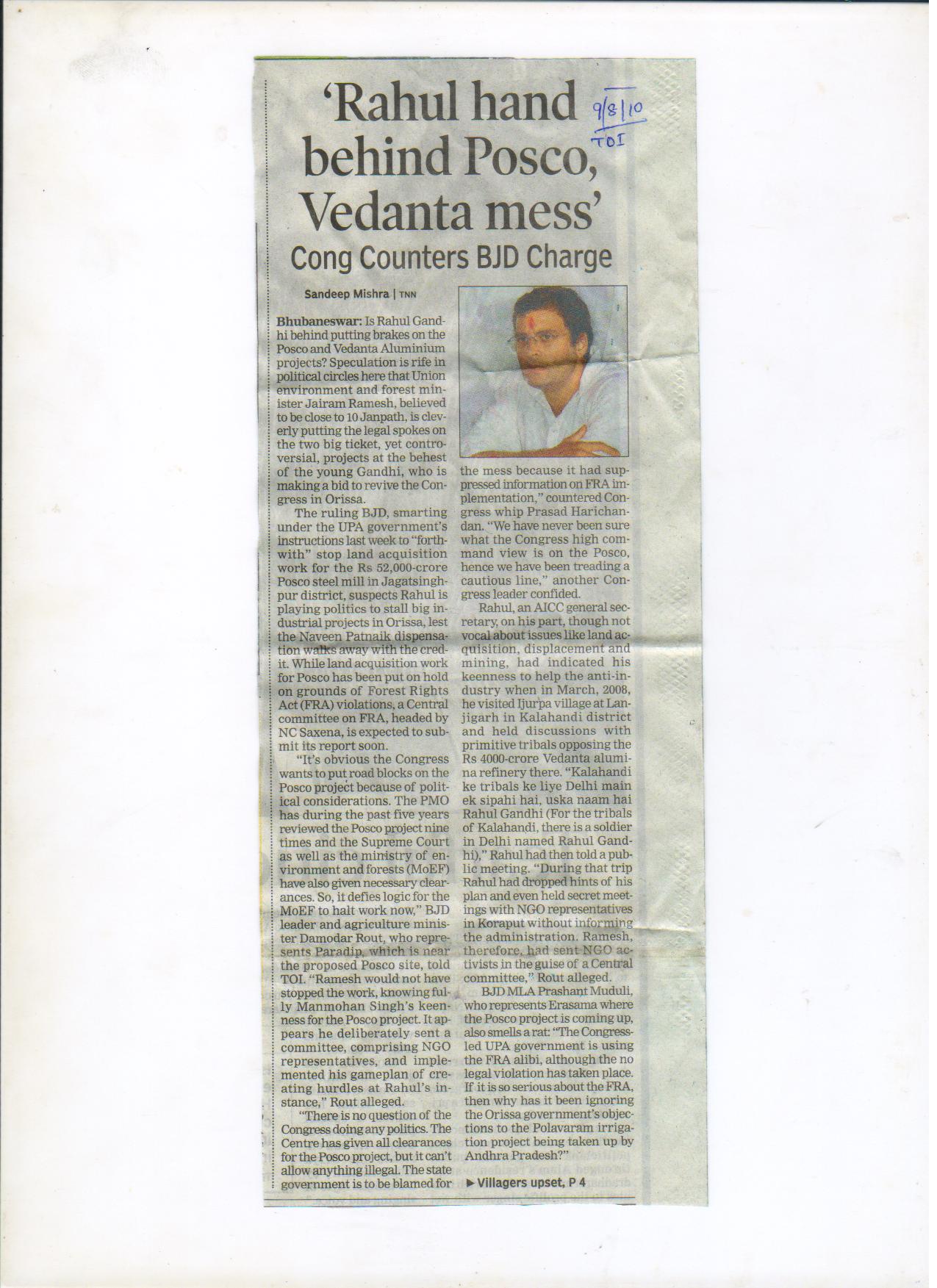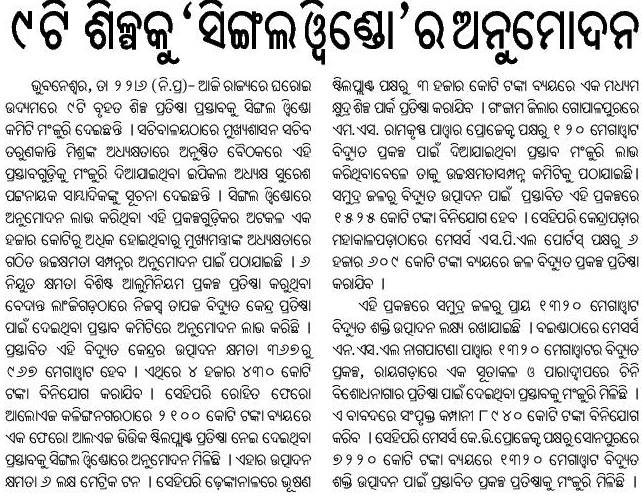Following is an excerpt from a report in LA Times about the Nano plant in Gujarat and how some of the landlosers have managed their finances.
But Pathan, and scores like him who live in the shadow of a new factory built by Tata Motors to make its ultra-cheap Nano car, are the beneficiaries of the race to transform India from a nation of small farmers to an industrialized power.
… Against this backdrop of strife, Pathan’s story is the ideal of what could be achieved if the more than 50 percent of Indians who live off the land get a real stake in the new economy. It’s a principle that advocates of market capitalism and human rights activists can agree on, but that often fails to materialize across rural India, where stories of powerful business interests and corrupt officials conspiring to throw poor farmers off their land are all too common.
Around the Tata plant in Sanand, in the western state of Gujarat, people have begun to talk of the "Nano effect."
Go down a narrow lane that runs to dirt not 15 minutes from the factory and amid the gamboling goats of Chharodi village, you will find 25 new homes.
Property prices have risen sharply — from 50 to 400 percent — and men are making fortunes brokering land deals.
The village head says three dozen of the 3,000 people in Chharodi have gotten work from contractors. The Nano factory hasn’t given them jobs directly, but it has offered a toehold in the industrial economy. They remain farmers, but a growing part of their income comes from informal business ventures or work for contractors.
Pathan and his three brothers sold the government one-third of their family farm to make way for the Nano plant. They were paid 20 million rupees ($432,900) — a fortune even in Gujarat, one of India’s richest states.
Ask the Pathan brothers what they did with this money, and they grin like schoolboys.
They bought 2.7 hectares (6.6 acres) of land — more than doubling their initial landholding — three kilometers (two miles) away, where they are preparing to plant their first crop.
They bought seven tractors and three Bolero jeeps, which they use for contracting work at the Nano site, raking in 455,000 rupees ($9,848) a month.
They are rebuilding their family home. Gone is the mud and thatch. Today their angular concrete two-story is the biggest on the block.
"You’ve done a damn good job out here," Pathan says of Ratan Tata, who heads the Tata group’s sprawling industrial empire.
The underlined part above is an important part. If the land losers are paid multiple times the "current" value of their land, in most places they can easily buy more than that amount of land within a few kms.
Following is an excerpt from a Nageswar Patnaik article in Economic Times.
There is something to cheer about for the families displaced by the Tata Steel Project at Kalinganagar. These families have achieved zero dropout rate at elementary school level, sustainable environment, poverty eradication, increase in literacy rate, gender equality, empowerment of women.
The achievers of these challenging Millennium Development Goals (MDGs) are not highly educated and extraordinary urbanite people, but ordinary members of self-help groups residing in rehabilitation colonies at Kalinga Nagar in Orissa’s Jajpur district.
Helped by country’s major steel producer, Tata Steel, the self-help groups called Tata Steel Parivars (TSPs) have successfully ensured that all children living in the colony went to the school and got education. Tata Steel is setting up of a 6-million ton per annum integrated steel plant at Kalinganagar Industrial Complex at Kalinga Nagar in Jajpur district.
“The noteworthy achievement of Tata Steel Parivars [TSP] at Kalinganagar is that those families have achieved the target of 100% elementary education with zero school drop out rate,” says Sukanta Rout, an educationist who played a crucial role in motivating the children, mostly tribals, to go to the school.
As many as 159 tribal children have been enrolled in the residential schools in Jajpur district. Similarly, 50 children have got the opportunity of studying in one of the premier schools of the state – Kalinga Institute of Social Science (KISS), here. As many as 213 children are studying in schools as day scholars.
Simultaneously, there is significant jump in the literacy levels of the TSPs from 45% in 2005 to 65% in 2010.
Most significantly, there has been an incredible and drastic change in the will power of women of these relocated families. The empowered women community are now self-employed and going overboard for what they are doing. They have engaged themselves in poultry farming, gardening, stone carving, saura painting and in setting up of small industries like phenyl and pickles.
“A few years before, we were quite poor, – we did not have money to even buy food, let alone send our children to school. Now with own our income, we are not only meeting our day-today expenses but also support our school and college-going children,” says Jamiti Mahanta, head of an SHG group.
If the industries that are coming up in Odisha, such as POSCO and Vedanta, can be made to do the above and perhaps more then it will be a win-win situation for all. POSCO’s current package seems to be a step in the right direction. Following is an excerpt from a Business Standard article on that.
Posco, the biggest foreign direct investment (FDI) in India at $12 billion (Rs 54,000 crore), has offered the largest ever compensation package in the country for the displaced and landless farmers.
The Rs 400 crore compensation — part of its estimated project cost — announced by Posco India for Orissa, is expected to benchmark industry relief in the country. The package will benefit over 2000 encroachers and landless labourers at the Posco site.
While Rs 100 crore will be provided for the acquisition of government and private land, Rs 100 crore will be given towards building a rehabilitation colony and Rs 200 crore as compensation to encroachers of government land.
The move – including encroachers of government land and landless labourers earning their livelihood from the area – was beyond the prescription of the state or national rehabilitation and resettlement (R&R) policies.
While fixing the price of private land at Rs 17 lakh per acre, the Rehabilitation and Periphery Development Advisory Committee (RPDAC) for the Posco project announced a compensation of Rs 11.5 lakh an acre for the loss of betel vines, most of which are on government land. There are about 1,877 betel vines in the site covering 300 acres.
Landless labourers working in the betel vines will get 20 per cent of the total compensation for the loss, which is over and above the amount paid to the owners of the areas where betel is grown.
Similarly, RPDAC has prescribed assistance of Rs 2 lakh per acre for owners of the prawn gheris — most of which are operating on government land — and Rs 1 lakh an acre for farmers using government land for agriculture.
In a never-before step, the South Korean steel giant’s package will pay an unemployment allowance of Rs 2,250 a month to the landless labourers, who will lose their livelihood following the acquisition, till they are provided job by the company. Capping it all, RPDAC has decided to provide alternative housing to families who had encroached and built their houses on government land.
In comparison, the compensation package for sharecroppers or landless labourers in Bengal’s Singur was 25 per cent of what the land owner received — for a single-crop Rs 2 lakh and Rs 3 lakh for double-crop farmland. In Nayachar, the West Bengal government had promised to rehabilitate 100-150 fishermen families who had encroached upon government land — the site for a chemical hub.
The rate is also more than what neighbouring Chhattisgarh is offering. The government there recently hiked the compensation to Rs 10 lakh for an acre for two-crop farmland, Rs 8 lakh an acre for single-crop un-irrigated land and Rs 6 lakh for barren land.
The captive mines given to these companies and the royalty rate is a different issue. I believe that currently the royalty given to the state is too little.


